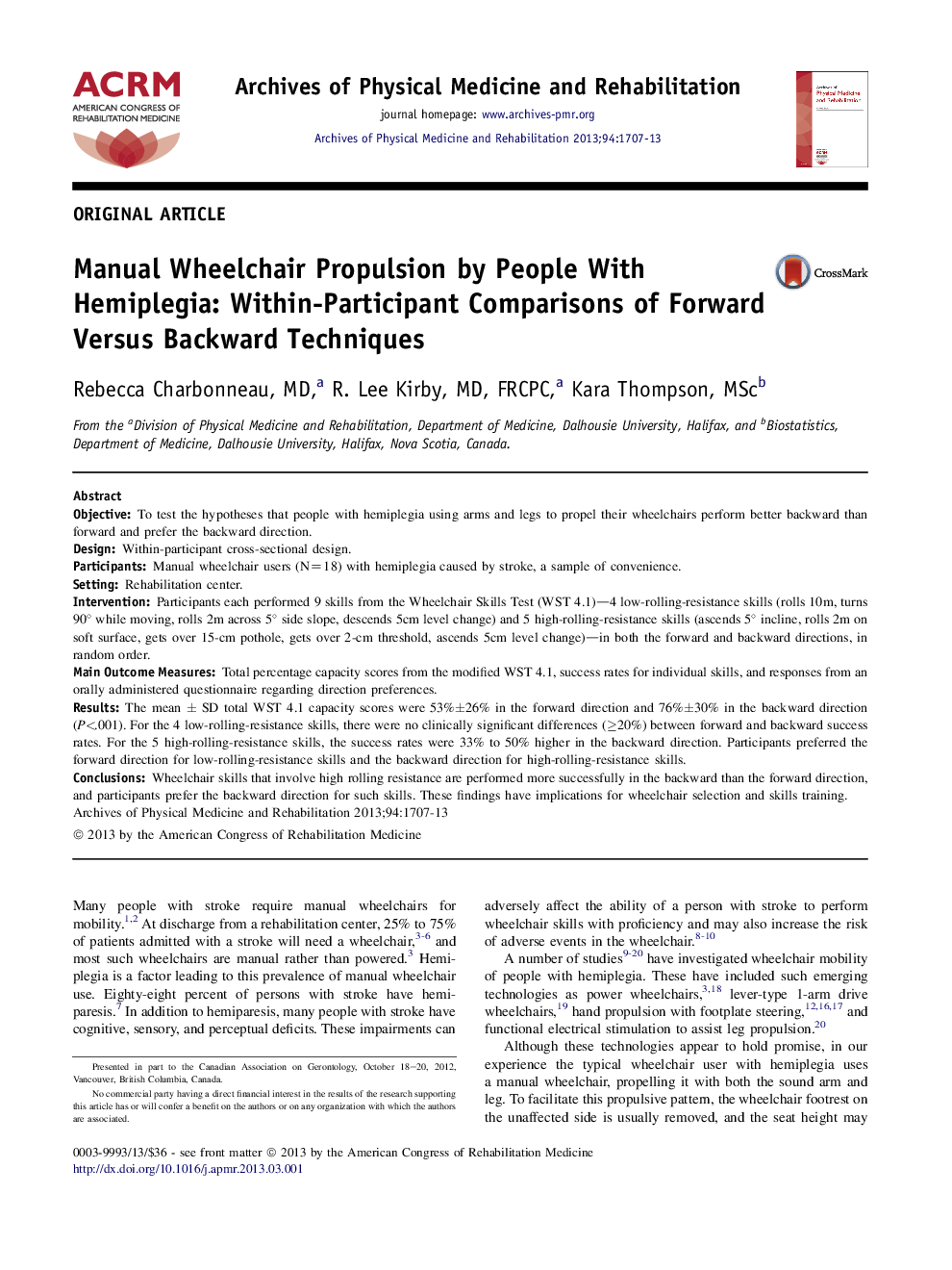| کد مقاله | کد نشریه | سال انتشار | مقاله انگلیسی | نسخه تمام متن |
|---|---|---|---|---|
| 3448966 | 1595707 | 2013 | 7 صفحه PDF | دانلود رایگان |

ObjectiveTo test the hypotheses that people with hemiplegia using arms and legs to propel their wheelchairs perform better backward than forward and prefer the backward direction.DesignWithin-participant cross-sectional design.ParticipantsManual wheelchair users (N=18) with hemiplegia caused by stroke, a sample of convenience.SettingRehabilitation center.InterventionParticipants each performed 9 skills from the Wheelchair Skills Test (WST 4.1)—4 low-rolling-resistance skills (rolls 10m, turns 90° while moving, rolls 2m across 5° side slope, descends 5cm level change) and 5 high-rolling-resistance skills (ascends 5° incline, rolls 2m on soft surface, gets over 15-cm pothole, gets over 2-cm threshold, ascends 5cm level change)—in both the forward and backward directions, in random order.Main Outcome MeasuresTotal percentage capacity scores from the modified WST 4.1, success rates for individual skills, and responses from an orally administered questionnaire regarding direction preferences.ResultsThe mean ± SD total WST 4.1 capacity scores were 53%±26% in the forward direction and 76%±30% in the backward direction (P<.001). For the 4 low-rolling-resistance skills, there were no clinically significant differences (≥20%) between forward and backward success rates. For the 5 high-rolling-resistance skills, the success rates were 33% to 50% higher in the backward direction. Participants preferred the forward direction for low-rolling-resistance skills and the backward direction for high-rolling-resistance skills.ConclusionsWheelchair skills that involve high rolling resistance are performed more successfully in the backward than the forward direction, and participants prefer the backward direction for such skills. These findings have implications for wheelchair selection and skills training.
Journal: Archives of Physical Medicine and Rehabilitation - Volume 94, Issue 9, September 2013, Pages 1707–1713